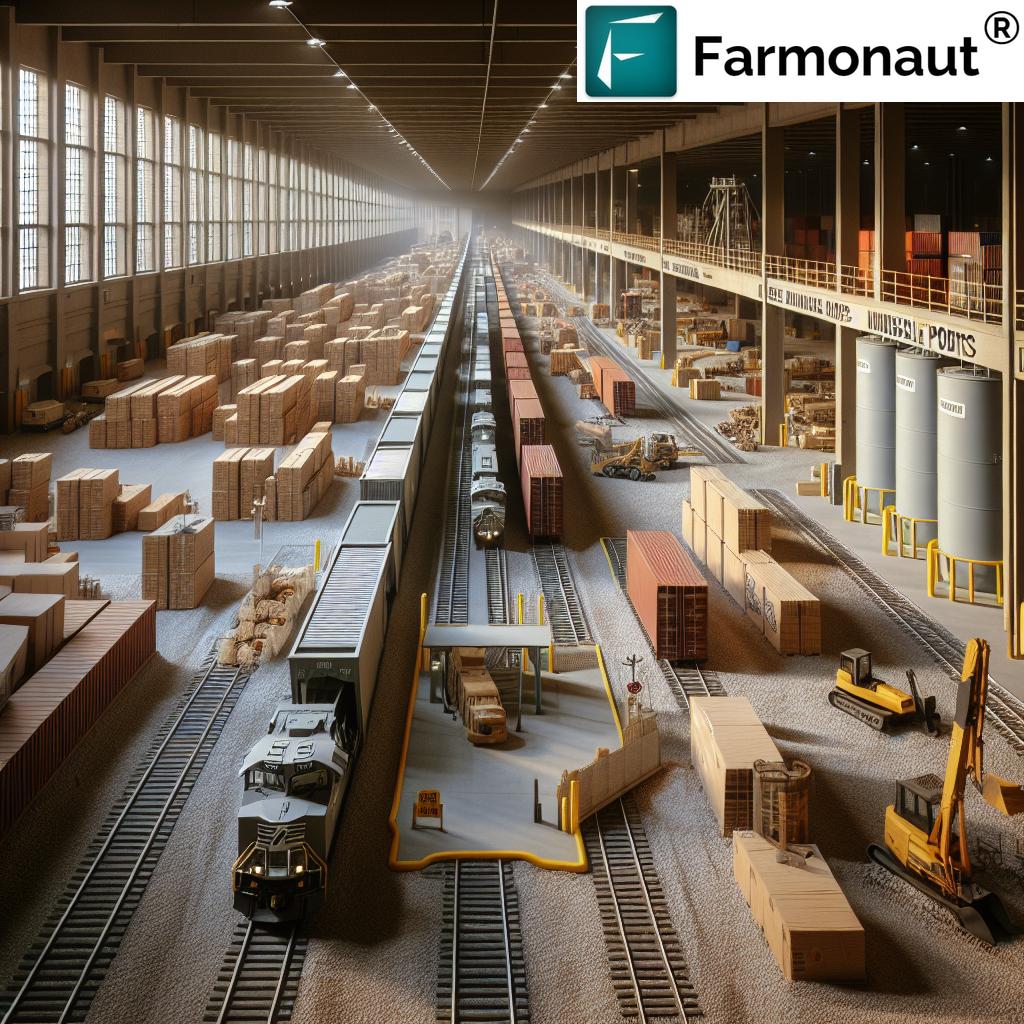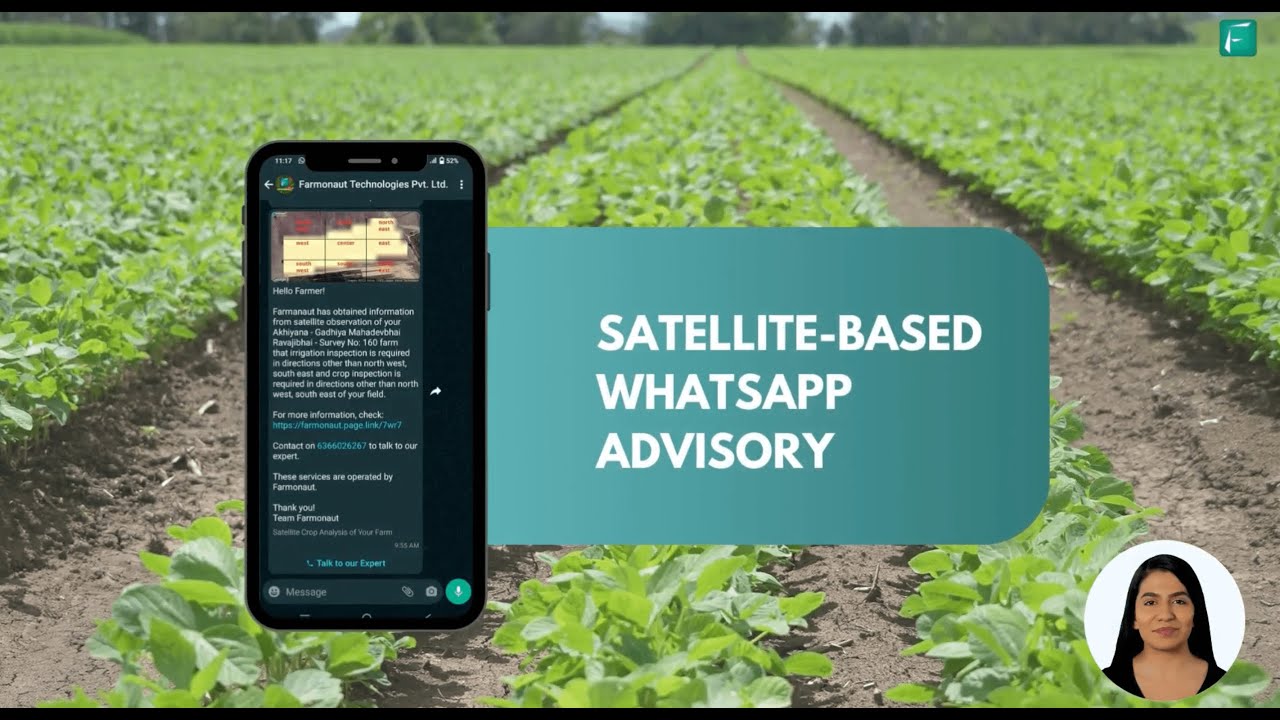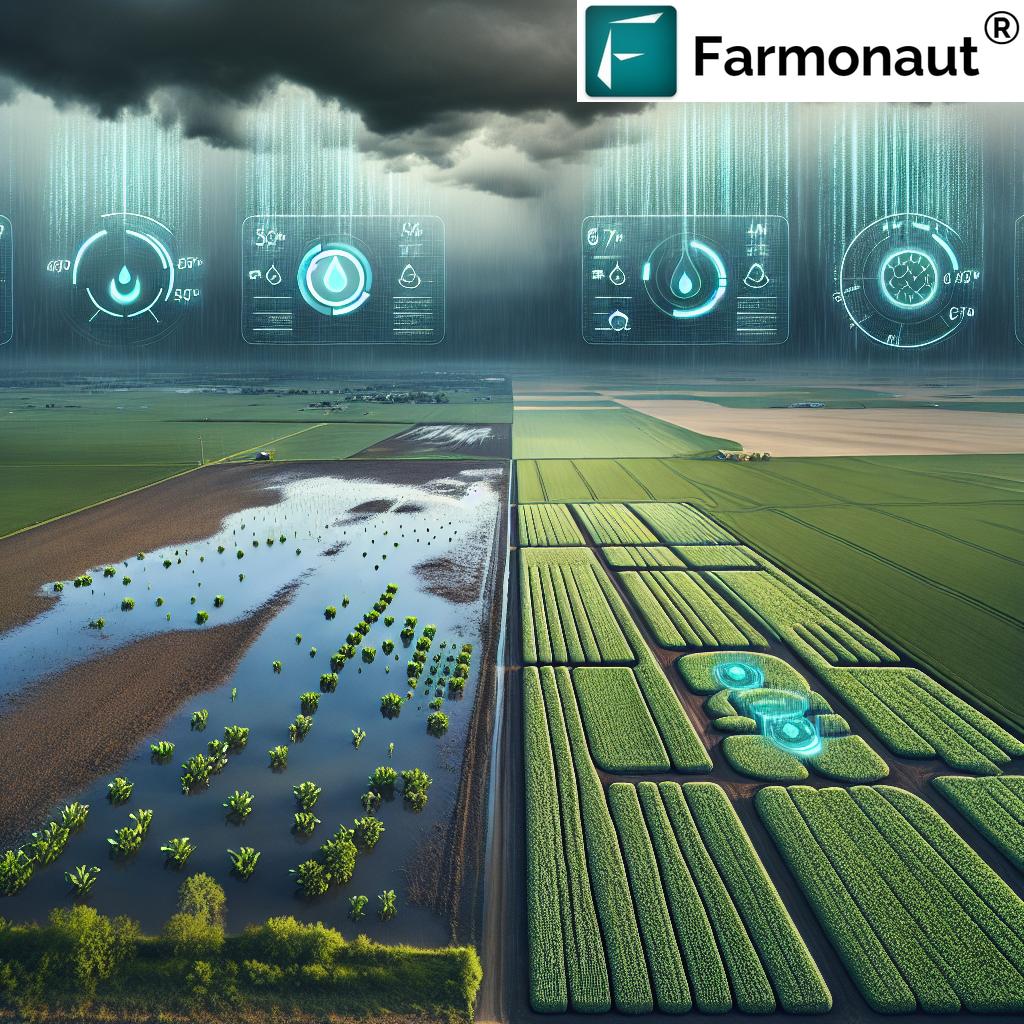Port of Mount Vernon Indiana: 5 Ways New Rail Boosts Economic Impact
Welcome to our in-depth exploration of the Port of Mount Vernon Indiana—a true logistics powerhouse that’s redefining the landscape of Midwest multimodal transportation through the introduction of new railroad services. In this comprehensive blog post, we dive deep into the ways in which these expanded rail capabilities are transforming not only the port, but also the economic future of Mount Vernon, Indiana, the broader region, and the entire Midwest. With expanded goods movement, enhanced logistics, and new rail services, the economic impact of ports in Indiana continues to rise, showcasing their pivotal role in industrial and agricultural products transport, shipping, and agriculture.
“The Port of Mount Vernon handles over 6 million tons of cargo annually, making it Indiana’s largest inland port.”
Celebrating New Railroads: The Grand Opening at Port of Mount Vernon Indiana
On a historic Tuesday at the Port of Mount Vernon Indiana, local officials, business leaders, and community members gathered for a grand opening and ribbon-cutting ceremony that will long be remembered. The event marked the official debut of enhanced railroad shipping in Indiana, a development set to amplify the port’s strategic value across the entire Midwest.
As the region’s largest multimodal logistics hub, the port sits on a sprawling 1,200-acre complex, serving as a vital link between water, road, rail, and pipeline transportation systems. Already host to major players involved in energy, agriculture, shipping, logistics, and manufacturing, the port now welcomes an upgraded rail partner into its network. This delivers a powerful boost to multimodal services and opens a new chapter of economic development potential the region has never before experienced.
During the ceremony, we witnessed local students engaging with the new trains, giving them the proud names “Power Paws” and “Wildcat Express”—symbols of Mount Vernon community pride and the new era of connectivity for all of southwest Indiana.
5 Ways New Rail Boosts Economic Impact at Mount Vernon Logistics Hub
The addition of this state-of-the-art railroad infrastructure brings transformative benefits. Here are five crucial ways the new rail services at the Port of Mount Vernon Indiana are boosting the economic, industrial, and social fabric of the region:
- Enhanced Midwest Multimodal Transportation Network
- Accelerated Goods Movement in Southern Indiana
- Expanded Industrial and Agricultural Products Transport
- Greater Regional Economic Development Potential
- New Era for Local Jobs, Education & Community Engagement
1. Enhanced Midwest Multimodal Transportation Network
Multimodal transportation is essential to efficient, cost-effective supply chain solutions across the Midwest. By integrating rail directly into the Port of Mount Vernon Indiana, we are strengthening the regional transportation system in Indiana. This integration means:
- Improved Connectivity: The port now seamlessly connects waterborne barge shipping along the Ohio River, major highway corridors (such as SR 69 and SR 62), and robust rail lines.
- Flexibility & Redundancy: With several multimodal options, companies can shift modes of transportation if disruptions occur, ensuring uninterrupted flow of goods.
- Scalability for Growth: As regional demand grows for movement of industrial, agricultural, and energy products, our multimodal platform can adapt swiftly and efficiently to evolving logistics needs.
The end result? The port becomes a logistics bedrock for the Midwest, serving as a crucial link in national and international freight corridors.
2. Accelerated Goods Movement in Southern Indiana
Speed, reliability, and cost containment are the lifeblood of goods movement in southern Indiana. The addition of new rail infrastructure at the Port of Mount Vernon dramatically improves transportation times and reduces bottlenecks:
- Direct Rail Access: Local companies now load and offload products—ranging from grains and industrial chemicals to energy fuels—directly at the port instead of trucking goods to distant intermodal yards.
- Reduced Congestion: More freight shifting onto rail alleviates truck congestion on highways, reducing wear-and-tear on roads and lowering emissions in the region.
- Expedited Industrial & Agricultural Products Transport: With a direct rail partner, it’s possible to coordinate faster bulk shipping, better syncing with supply windows critical for energy and agro-industrial sectors.
For manufacturers, shippers, and farmers in our area, this translates to more efficient logistics, cost competitiveness, and improved bottom lines.
3. Expanded Industrial and Agricultural Products Transport
The heartbeat of the Mount Vernon logistics hub is its capacity to move a wide variety of products, especially those vital to the Midwest’s economy.
- Energy Commodities: Petroleum, coal, ethanol, and other fuels now flow out with even greater efficiency, powering the surrounding industrial ecosystem.
- Agricultural Output: From soybeans and corn to specialty crops, local farmers leverage direct rail to reach domestic and export markets faster and at a lower cost.
- Manufacturing Inputs: Chemical feedstocks, metals, and other raw materials needed by regional industry can be delivered reliably, strengthening the local manufacturing base.
This expansion matters for not just companies and manufacturers, but also for every farmer and agribusiness operator seeking to optimize their supply chains and remain competitive.
For those seeking to ensure traceability of agricultural products all the way from the field to the warehouse or buyer, leveraging a multimodal, blockchain-ready system is a game changer in transparency and trust. Farmonaut’s product traceability solutions support food safety and compliance for both domestic and overseas shipments.
4. Greater Regional Economic Development Potential
The upgrade to rail services brings a significant economic impact for Mount Vernon, Indiana and the greater regional transportation system.
- Business Attraction: With enhanced multimodal transportation and new rail services, more logistics-dependent industries will consider investing in Southwest Indiana.
- Job Creation: Growth of port-related businesses—which include logistics, warehousing, transportation, and value-added manufacturing—drives new employment opportunities for the area.
- Increased Output: The port’s expanded capacity increases throughput, translating to higher revenues for local and state economies.
- Public Revenues: Boosts in economic activity generate more tax revenue for community reinvestment in infrastructure and public services.
Farmonaut’s carbon footprinting tools play a supporting role in this new era, allowing businesses to track and reduce transportation emissions—a must for companies seeking to attract environmentally conscious partners and investors. Sustainability isn’t just an ethical pursuit; it’s central to the economic impact of ports in Indiana as they adapt to global market demands and environmental regulations.
5. New Era for Local Jobs, Education & Community Engagement
Beyond cargo volumes and revenues, the new railroad investment inspires broad community engagement and workforce development:
- Educational Outreach: Local students were among the first to interact with the new trains—naming them “Power Paws” and “Wildcat Express”—connecting education to real-world logistics, jobs, and technology.
- STEM & Technical Training: The expanded port system provides fertile ground for partnerships with local colleges and vocational schools to prepare the next generation of logistics, transportation, and industrial technology talent.
- Community Pride: The investments signal a long-term commitment to the prosperity and vitality of Mount Vernon and surrounding communities.
For local families and the workforce, this means access to good jobs, technical training, and a bright future built around a thriving ports and logistics economy.
“New rail services at the port are projected to increase regional economic output by $1.5 billion over the next decade.”
Before and After Rail Expansion: Economic Impact Comparison
To truly appreciate the scale and promise of the new rail services at the Port of Mount Vernon Indiana, let’s examine a side-by-side comparison of key economic and logistics metrics before and after expansion.
| Metric | Estimated Values Before Rail Expansion |
Estimated Values After Rail Expansion |
|---|---|---|
| Cargo Volume Handled (tons/year) | 6 million | 8+ million |
| Number of Businesses Served | 30+ | 50+ |
| Estimated Economic Output (10-year projection) | $9 billion | $10.5 billion |
| Logistics Jobs Created | 2,000 | 3,500+ |
| Regional Connectivity Score* | Medium | High |
*Score based on integration of water, rail, road, and pipeline transportation modes.
Farmonaut’s Role in Modernizing Midwest Agriculture and Regional Transport
As the region accelerates towards a more robust multimodal transportation system, the integration of technology remains essential—especially in the agricultural, energy, and logistics sectors that form the lifeblood of the Port of Mount Vernon Indiana.
Empowering Agriculture & Logistics with Farmonaut’s Digital Platform
Farmonaut is at the forefront of precision agriculture and digital farm management, uniquely supporting industrial and agricultural products transport in Indiana and beyond:
- Satellite-Based Crop Monitoring: With near-real-time multispectral imagery, farmers and agri-businesses can assess vegetation health, soil moisture, and crop stress at every stage—leading to informed decisions on irrigation, fertilization, and logistics timing.
- AI & Advisory Systems: Farmonaut’s Jeevn AI analyzes massive datasets to deliver tailored crop management strategies, helping increase productivity and reduce losses—an essential function for farms competing in a logistics-driven, globalized market.
- Blockchain Traceability: Ensure that every step in the products’ journey—from farm through the Port of Mount Vernon Indiana and onto outbound rail and river networks—is transparent, traceable, and tamper-proof.
- Fleet and Resource Management: Our platform enables efficient tracking and utilization of agricultural and logistics fleets. By optimizing vehicle and machinery deployment, we cut operating costs for both farmers and freight operators engaged in goods movement via multimodal routes.
- Satellite-Based Crop Loan and Insurance Support: Bankers and insurers can verify crop and land conditions in real-time, vastly improving access to credit and reducing claim fraud.
- Farmonaut API: Integrate satellite data, weather insights, and more directly into your business or analytics applications.
- API Developer Docs: Easily access documentation for seamless integration.
Farmonaut’s technology-driven, affordable platform is purpose-built for a rapidly evolving Midwest transport landscape, ensuring that regional farms and businesses thrive as the Port of Mount Vernon Indiana cements its place as a logistics hub of national significance.
For large-scale operations, Farmonaut’s large scale farm management tools enable managers to oversee hundreds or thousands of acres—streamlining everything from planting to harvest to logistics integration with ports and railroads.
Those looking for continuous expert advice can access Farmonaut’s crop, plantation & forest advisory services, which provide actionable intelligence for both field and logistics planning.
Farmonaut Subscriptions: Empowering Port-Linked Agriculture & Logistics
Whether you are a farmer, agribusiness, logistics operator, or policy-maker in Indiana, Farmonaut subscriptions put precision data and advanced analytics in your hands. Discover the best package for your needs below:
Explore Farmonaut’s API for direct business/system integration, or check out the API Developer Docs for more information.
Frequently Asked Questions (FAQ) – Port of Mount Vernon, Indiana & Midwest Multimodal Transportation
1. What is the Port of Mount Vernon Indiana, and why is it important?
The Port of Mount Vernon Indiana is the largest inland port in the state, spanning over 1,200 acres on the Ohio River. This major logistics hub handles over 6 million tons of cargo annually and supports companies in energy, agriculture, shipping, logistics, and manufacturing. Its multimodal setup (rail, barge, trucking, pipelines) connects regional agriculture and industry to national and global markets, amplifying the economic impact of ports in Indiana.
2. How will new rail services improve economic impact in southern Indiana?
New rail infrastructure increases goods movement efficiency, expands business attraction, creates jobs, and elevates the port’s role as a central Midwest multimodal transportation node. Over 10 years, output is projected to grow by $1.5 billion, with higher cargo throughput, lower logistics costs, and stronger regional supply chains.
3. What kinds of goods and products move through the Mount Vernon logistics hub?
The port primarily handles energy commodities (liquid and dry bulk, fuels, aggregates), agricultural products (soybeans, corn, fertilizers), and manufacturing materials (chemicals, metals). This diversity supports a resilient logistics ecosystem.
4. What is “multimodal transportation,” and how does it benefit businesses?
Multimodal transportation uses more than one mode of moving goods (rail, barge, truck, etc.) within one journey. For businesses, this means more shipping options, cost savings, risk mitigation, and adaptability to global and domestic logistics demands.
5. How can agriculture businesses leverage Farmonaut’s technology at the port?
Agricultural firms can use Farmonaut’s carbon footprinting, crop health monitoring, and supply chain traceability for improved crop yields, sustainability, and assurance of origin. These technologies enhance transport planning and compliance for agricultural exports through the port.
6. Is there support for large-scale farm management and fleet tracking?
Yes! With Farmonaut’s large scale farm management and fleet management tools, agriculture and logistics operators can run efficient, data-driven businesses that are fully integrated into the regional transportation system Indiana supports.
7. Where do I get started with Farmonaut’s services?
- Try our Web App for instant access to satellite crop management.
- Download the Android App or iOS App for mobility.
- Contact us for a tailored demo for your port-linked business.
Conclusion: The Future is Multimodal, Digital & Sustainable
The Port of Mount Vernon Indiana is demonstrating what’s possible when world-class infrastructure, advanced digital technology, and community engagement come together. By weaving together new rail services, multimodal logistics, and high-impact agricultural platforms like Farmonaut, we are powering the next chapter of economic growth and resilience—not just for Mount Vernon or Indiana, but for the entire American Midwest.
From the largest industrial and agricultural products shipments to the smallest family farm, the future belongs to those who embrace both infrastructure and digital transformation. The combination of efficient railroad shipping, comprehensive traceability, carbon tracking, fleet management, and AI-powered agronomy are rewriting how our region feeds, fuels, and moves the world.
Come experience the power of the new Port of Mount Vernon Indiana—where opportunity, innovation, and logistics converge!






















